I use Nimbus Look and Feel in a project. However, although every GUI JComponent have a Look and Feel of Nimbus, JFrame always have Windows Look and Feel.
How can JFrame have Nimbus Look And Feel?
Edit: Operating System : Windows XP
I use Nimbus Look and Feel in a project. However, although every GUI JComponent have a Look and Feel of Nimbus, JFrame always have Windows Look and Feel.
How can JFrame have Nimbus Look And Feel?
Edit: Operating System : Windows XP
Try using this:
JFrame.setDefaultLookAndFeelDecorated(true); //before creating JFrames
For more info., see How to Set the Look and Feel in the tutorial.
import javax.swing.*;
class FrameLook {
public static void showFrame(String plaf) {
try {
UIManager.setLookAndFeel(plaf);
} catch(Exception e) {
e.printStackTrace();
}
JFrame f = new JFrame(plaf);
f.setDefaultCloseOperation(JFrame.DISPOSE_ON_CLOSE);
f.setSize(400,100);
f.setLocationByPlatform(true);
f.setDefaultLookAndFeelDecorated(true);
f.setVisible(true);
}
public static void main(String[] args) {
showFrame(UIManager.getSystemLookAndFeelClassName());
showFrame(UIManager.getCrossPlatformLookAndFeelClassName());
showFrame("com.sun.java.swing.plaf.nimbus.NimbusLookAndFeel");
}
}

Confirming @Andrew's suspicion, setDefaultLookAndFeelDecorated() says that, when supported, "newly created JFrames will have their Window decorations provided by the current LookAndFeel." I changed the size to see the whole title.

import javax.swing.*;
class FrameLook {
public static void showFrame(String plaf) {
try {
UIManager.setLookAndFeel(plaf);
} catch (Exception e) {
e.printStackTrace(System.out);
}
JFrame f = new JFrame(plaf);
f.setDefaultCloseOperation(JFrame.DISPOSE_ON_CLOSE);
f.setSize(500, 100);
f.setLocationByPlatform(true);
JFrame.setDefaultLookAndFeelDecorated(true);
f.setVisible(true);
}
public static void main(String[] args) {
showFrame(UIManager.getSystemLookAndFeelClassName());
showFrame(UIManager.getCrossPlatformLookAndFeelClassName());
showFrame("com.sun.java.swing.plaf.nimbus.NimbusLookAndFeel");
}
}
And confirming based on the Windows Classic UI for XP.

You can't do it directly since Nimbus doesn't support window decorations, that's why you always get a system window, even with the given answers. Try this very simple code:
import javax.swing.LookAndFeel;
import javax.swing.UIManager;
import javax.swing.UIManager.LookAndFeelInfo;
public class DoesNimbusSupportWindowDecorations {
@SuppressWarnings("unchecked")
public static void main(String... args) {
LookAndFeel nimbus = null;
for (LookAndFeelInfo lafInfo : UIManager.getInstalledLookAndFeels()) {
if (lafInfo.getName() == "Nimbus") {
try {
nimbus = ((Class<LookAndFeel>) Class.forName(
lafInfo.getClassName())).newInstance();
} catch (Exception e) {
System.err.println("Unexpected exception.");
}
}
}
if (nimbus != null) {
System.out.println("Nimbus supports window decorations...? "
+ (nimbus.getSupportsWindowDecorations() ? "YES" : "NO"));
} else {
System.err.println("Your system does not support Nimbus, you can't"
+ " run this test.");
}
}
}
or simply inside your code with the proper import:
System.out.println(new NimbusLookAndFeel().getSupportsWindowDecorations());
What's beyond my understanding is why Sun decided such a thing since the decorations do exist for internal frames and have a custom decoration. I'll be investigating if it's possible to use these decorations by extending NimbusLookAndFeel or playing with defaults, since Nimbus is based on Synth, unsure about the best way.
This is how I do. A copy paste from my eclipse project.
import javax.swing.UIManager.LookAndFeelInfo;
import java.awt.EventQueue;
import java.awt.BorderLayout;
import javax.swing.*;
public class Frame1 {
private JFrame frame;
public static void main(String[] args) {
EventQueue.invokeLater(new Runnable() {
public void run() {
try {
for (LookAndFeelInfo info : UIManager.getInstalledLookAndFeels()) {
if ("Nimbus".equals(info.getName())) {
UIManager.setLookAndFeel(info.getClassName());
break;
}
}
Frame1 window = new Frame1();
window.frame.setVisible(true);
} catch (Exception e) {
e.printStackTrace();
}
}
});
}